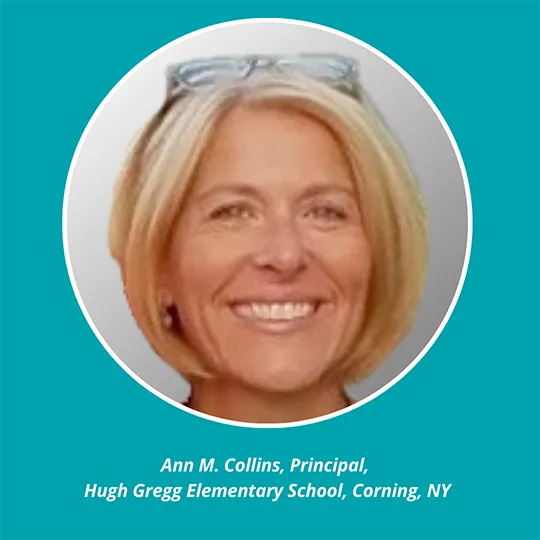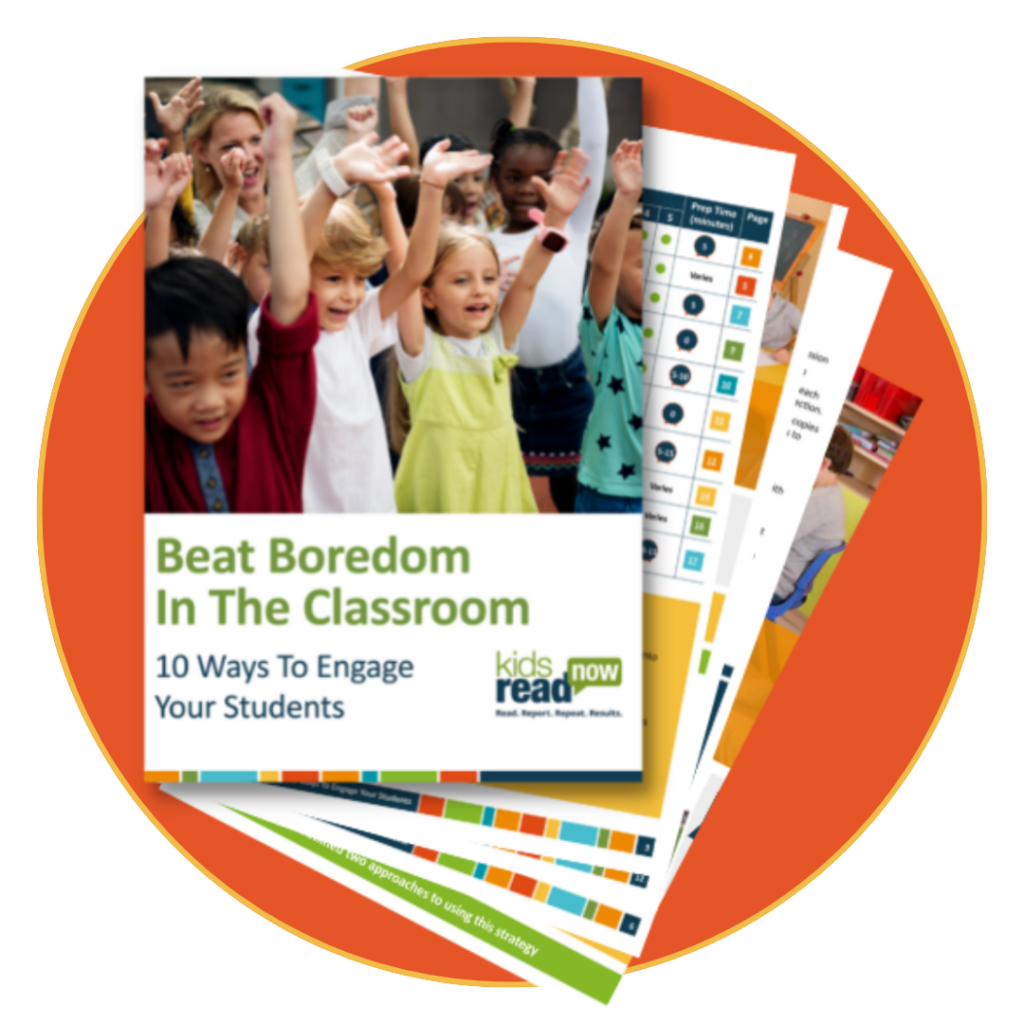Estimated reading time: 10 minutes
Prevent the Summer Slide in Literacy — Starting Right Now!
Take action now to preserve student progress
Spring is in full swing! And while others are thinking about sunshine, you’re thinking about your students: Will they keep reading this summer?
You’re not alone.
At Kids Read Now, we’re asking the same question. Like you, we know how real the summer slide is — especially for students who’ve already overcome big obstacles this year.
But here’s the good news: your ability to prevent learning loss is just as real.
Below, you’ll find timely, research-backed strategies you can use right now to keep students reading — and growing — all summer long.
You’ll also discover resources and programming that make it easier for families to stay engaged and for you to take a well-earned break.
The cost of summer learning loss
Students who made hard-won gains this year risk slipping backward over the summer break — especially those already achieving below benchmark.
Students who don’t read consistently over the summer break can lose 2–3 months of progress.
And when they return? The first weeks of fall are often spent reteaching, reviewing, and trying to rebuild momentum you worked so hard to muster.
That time adds up. It’s time that struggling readers can’t afford to lose.
You know this. You’ve lived it. You’re already wondering: What can I do now to help prevent summer reading loss — without taking on more than I can handle?
Here’s the good news: research shows that regular reading, especially when supported by families and guided by simple comprehension prompts, does prevent the summer slide. You don’t need a new curriculum or extra classroom time — you need the right tools, shared at the right time.
Build Stronger School-Community Partnerships
Discover how to find local partners and sponsors to support your school’s reading programs. This step-by-step guide makes it easy to get your community involved in student success.

The truth about summer reading plans (and why most fail)

Let’s start with what doesn’t work.
- A packet of worksheets. Ends up under the couch, if it’s even taken out of the backpack.
- A list of required reading. Met with groans from kids and adults alike. Also — access issues.
- A vague suggestion to “read every day.” No structure; no accountability.
These plans aren’t bad in theory. But they rely too heavily on families to create reading routines from scratch, and on teachers to follow up later.
That’s a lot to ask from anyone — especially when summer is meant to be a break for many.
If we want students to keep reading and thinking, we need a better approach.
See How a Summer Reading Program Delivered 2–4 Months of Growth
A large-scale study shows that Kids Read Now isn’t just preventing summer reading loss, it’s helping K–5 students gain up to 4 months of learning over the break.

What actually works to prevent the summer slide in literacy
Start the conversation early, and make it about identity.
Don’t wait for May to start talking about summer reading. Begin while students are still in reading mode.
Right now, while students are well-versed in reading routines, ask them:
“What kind of reader do you want to be over the summer?”
“What’s a topic or series you’d love to explore?”
“What kind of books make you feel excited?”

Framing reading as part of who they are (not just what they do in school) helps them carry it across settings and over the months.
Create personal reading plans, and practice.
Through brainstorming and modeling, have each student create a concrete plan.
Use a graphic organizer to prompt them to consider the who, what, when, where, why, and how of summer reading. Guide them to write or draw their plan so they can take it home to share with their family.
Discuss where they will put their plan — the fridge, with books on a shelf or in a box, taped to the back of their door. Have them practice their summer plan at home in advance, then debrief back at school.
Pro Tip: Teach students about habit-stacking to increase the chances they’ll remember to read this summer. In this video, Kids Read Now CEO Dr. Kristen Walter talks about making reading a habit for by attaching it to existing routines outside of school.
Help families understand their role, and take away the pressure.
Families want to help, but they don’t always know how. Your communication can make all the difference.
Use simple language like:
“Reading just 15 minutes a day this summer will help [Student Name] keep all the progress they’ve made this year.”
“You don’t need to teach anything. You just need to talk to your child about books. Telling stories counts!”
“Don’t worry — no need to plan long reading sessions. Practice works better in small chunks.”
The key is making expectations feel doable, not overwhelming. We cover this, and 4 other common barriers to successful family engagement in literacy, in our brand new resource:
Pro Tip: Download The Schools’ Family Engagement Kit to Support Reading at Home.

We released it just in time for you to utilize the 28 ready-to-go resources to set students and caregivers up for success this summer.
Make it feel like fun, and build anticipation.
Kids want freedom over the summer. So give it to them — on the bookshelf.
Let them choose books that they can access that match their interests or sense of humor. If you’re not sure what they’re into right now, ask!
If your school has access to a reading Wish List book catalog or a library partnership, help students preview their options. Talk up the stories. Make a game out of choosing titles they’re curious about.
Reading is more likely to happen when it feels like play, not pressure.
Get distracted students refocused & learning
Reignite learning. Sign up to get 10 quickfire academic activities that combine learning with fun. Quick and easy to weave into any lesson.

Set a purpose for summer reading, and check back in.
Motivated educators know the story doesn’t end in May.
Let students know you’ll be eager to hear what they read over break. Give them a journal, a reading “passport,” or a few sentence starters:
- “The book I liked most was…”
- “This character reminded me of…”
Not only does this give students purpose, but it also helps next year’s teacher hit the ground running in the fall with connected writing activities.
What if there was a way to do it all automatically?
Here’s the part nobody says out loud: Teachers need a break, too.
You can’t monitor reading logs, check in with every family, and track summer progress on your own. (Well, not without sacrificing your own R&R and family time.)
That’s why schools need support systems that extend literacy beyond the classroom without putting it all on you.
Imagine this:
- Every student picks their own books before this school year ends.
- Those books get mailed directly to their homes all summer long.
- Each one comes with story-specific, family-friendly conversation prompts inside.
- Parents get text reminders to keep reading on track. (Bonus: The app translates messages to families in over 100 languages.)
- You get to relax, knowing someone else is tracking the progress.
That’s exactly what Kids Read Now does.
Now is this might be the lift you didn’t know you needed. If your school doesn’t already have a summer reading solution in place, now is the time to suggest one.
“Kids Read Now offers consistent and replicable positive impacts and is a model that can be scaled.”
Dr. Borman led research into the effects of Kids Read Now. Dr. Borman is a leading education researcher, methodologies, and policy analyst with a focus on educational outcomes, education policy, and education inequality.
Recommend a program that’s proven to prevent summer reading loss
As a teacher or instructional leader, you may not make the final call — but your voice matters. In fact, it often starts the conversation.
Kids Read Now is a summer literacy program based in Science of Reading principles. It’s been proven to prevent summer reading loss for over a decade — especially for struggling readers.
Motivated educators across the country have seen results:
“Wonderful organization that is working with children and establishing long-term reading habits and knowledge. Love them!”
— Ken M., District Administrator, Alaska
“97% of our returning 3rd–5th grade readers maintained or grew their skills over summer. We attribute that to Kids Read Now.”
— Ann Collins, Principal, Corning, New York
“The kids love getting the books throughout the summer, and come in the following school year talking about all the awesome books that they got. I can tell it definitely encourages the kids to read.”
— K-5 Classroom Teacher, Troy City Schools, Ohio
Here’s a sample message you can send to your principal or literacy coordinator today — just copy and paste!
Hi [Name],
I’ve been thinking about ways we can help our students maintain their reading gains over the summer…
I came across Kids Read Now. Their summer program lets students choose their own books and mails them directly home over the summer, along with ways to spark family engagement. They have the evidence to back it up.
Would you be open to scheduling a 15-minute call with their team? It seems like a good fit for our needs.
Let me know how I can help. Thanks!
Sometimes the best way to advocate for your students is to connect decision-makers with the resources they need. This is one of those times.
It’s never too soon to start curbing the summer slide
You’ve worked too hard — and your students have come too far — to risk losing it all to the summer slide.
By starting conversations now, equipping families with resources, and recommending a program to prevent summer reading loss, you’re doing what you always do: what’s best for students.
We’re here to make it easier for you to give every student the chance to keep growing this summer.
No packets. No pressure. Just books, choice, and a whole lot of support.

Want to explore how we can help your school prevent summer reading loss?
Frequently Asked Questions
Summer reading loss, also known as the “summer slide,” refers to the decline in reading skills that can occur when students don’t read consistently over summer break. Without regular practice, students—especially those below benchmark—may lose 2–3 months of reading progress.
Start by encouraging students to choose books they’re excited about, help families understand the importance of consistent reading, and make reading feel fun—not like homework. Tools like reading challenges, family conversation starters, and mailed books can help keep momentum going.
The most effective strategies include letting kids choose their own books, setting aside daily reading time, involving families through shared reading routines, and connecting books to real-life activities. Consistency and enjoyment are key.
Each book mailed home through Kids Read Now includes a Discovery Sheet with simple discussion prompts. Families can report completed books through the mobile app, which supports over 100 languages. Parents also receive automated messages to stay on track.
Not at all. Many schools are finalizing summer literacy plans right now. You can connect your leadership team with KRN’s outreach staff to explore a tailored plan at this link or by email info@kidsreadnow.org.


